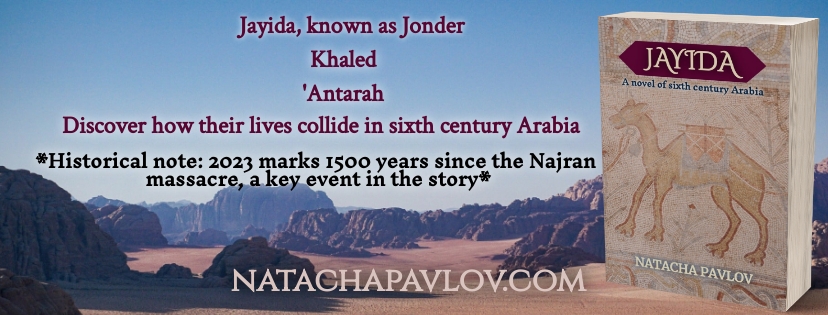Honoring Jeanne la Pucelle
Numismatics in Jayida: Negus Kaleb of Aksum
The sixth century AD and Late Antiquity overall are largely underrepresented in historical fiction, and even more so when it comes to the pre-Islamic Middle East and Arabia. One of my goals with my latest novel Jayida was to fill that gap while recreating my story (partially inspired by a small segment of Sirat ‘Antar) in a more historically accurate context.
This 2023 year marks 1500 years since the massacre of Christians in Najran by the Jewish leader Dhu Nuwas of Himyar. (Today the location is a city in southwestern Saudi Arabia near the border with Yemen.) It prompted international response, mainly from Negus Kaleb of Aksum–an event also described by Emperor Justinian‘s historian, Procopius.

In my book, Jayida–known as the boy Jonder–Khaled, and ‘Antarah increasingly feel the impact of the shattering event amidst often volatile Arabian tribal relations, along with spiritual and climatic shifts sweeping the sixth century.
Exact event dates vary but a constant is November 523 AD, with some narrowing it down to November 25, 523. The leader Al-Harith (romanized to Arethas) and other martyrs of Najran are commemorated in the Orthodox and Eastern Catholic Churches, who follow the Greek-Slavic, Ethiopian and Syriac traditions. They are also venerated in the western Latin Church.
Get the novel: natachapavlov.com/jayida/
